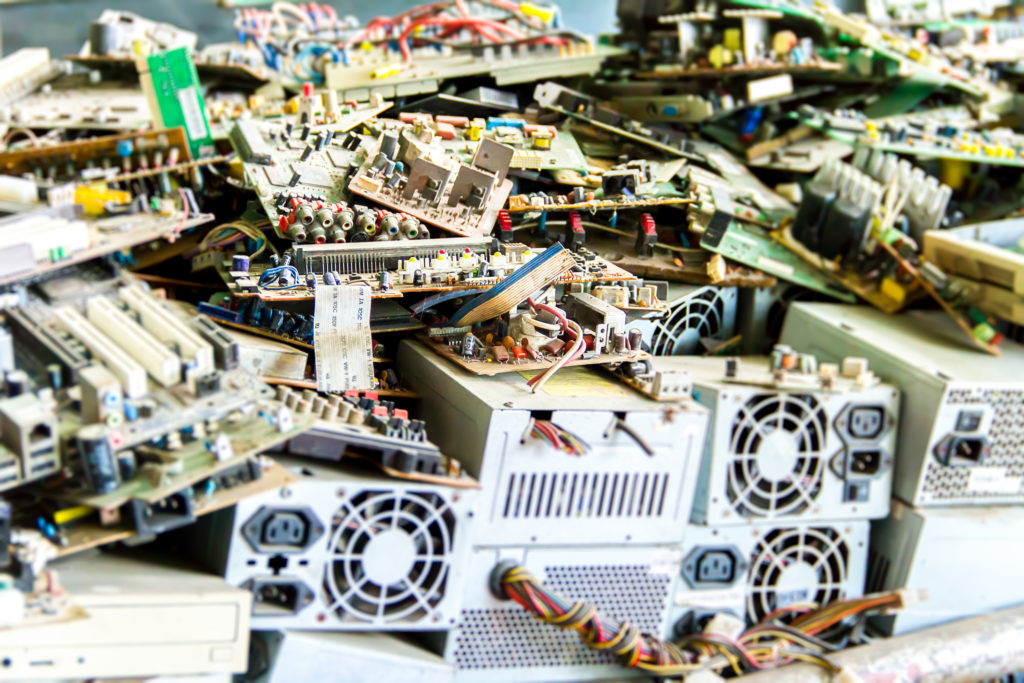In the latter months of the year, the holiday season brings lots of gifts, packages, and deliveries. One of the best ways to spread holiday cheer and connect with one another is to reduce, reuse, and recycle packaging material. Doing so will benefit the gift that keeps on giving—our planet.

The question is, what’s the best way to reduce, reuse, and recycle the materials used for gifting? First, it’s important to know which gifting material is recyclable and which is not recyclable.
The Do’s and Don’ts of Recycling During the Holidays
When it comes down to determining what gift and packaging material is recyclable, remember this: The simpler, the better. This means that the chances of material being recyclable are a lot higher when it’s not all decorated with elaborate, fancy detail. So, what should you look for instead? Try to purchase material that is paper-based. For example, paper-based wrapping paper, 100% paper gift bags, paper holiday cards, and envelopes, and cardboard boxes are all recyclable materials. Although these options may seem bland, they can be spruced up with natural materials like pinecone, fall leaves, or a few Christmas tree sprigs. The good news is that tape and sticky gift tags are also good-to-go in the recycling bin as long as they are attached to a recyclable envelope or gift wrapping.
While keeping in mind that the simple is better in terms of recycling, this means that things like glitter, metallic, velvet, and laminated gift wrapping and packaging are a big no. This list also includes decorative toppers like bows, ribbons, and twine. It’s also important to think of material that you are putting inside of a gift when considering recyclable material. Bubble wrap, cellophane, and foam packaging for example are not recyclable. However, this doesn’t mean that you can’t protect your items in other ways. Instead, use more eco-friendly materials like newspapers, old maps, or fabric.
Reduce and Reuse
Transitioning to more recyclable material for your gifts and packages is an awesome way to be more environmentally friendly. However, if you really want to maximize your contribution to being greener this holiday season, then you may want to consider some awesome ways to reduce your waste by reusing your material.
Wrapping with fabric is a great alternative to single-use wrapping paper. The good thing about fabric is that it comes in just about every color and pattern imaginable, so you’ll be sure to find one suited for every gift. Even fabrics laying around the house can be used for wrapping such as bandanas, scarves, or cloth napkins. The best thing about this alternative is that the receiver gets to reuse it for their gifting and reduce their waste as well.
One way to really personalize a gift for someone is by creating the bag or wrapping it yourself. There are many different techniques and approaches to doing this. Some of the most common ways people personalize bags and wrapping is by sewing scrap fabric together, knitting, and crocheting.
If you really want to get creative and sustainable, try using plarn: yarn made out of plastic. For people who have a bunch of unused plastic bags sitting around their living space, making and using plarn is especially a great idea. Plarn is flexible, durable, and can be used to create any shape or size that is needed. Reuse your plastic bags this year for something that gives a person material for many more uses, and reduce your overall waste.
A Note on Electronics
Electronics are a hot gift to give and receive for the holidays but what’s not hot is putting outdated ones in your curbside recycling. Recycling electronics curb-side has dangerous effects because when disassembled, toxic materials like Mercury, Lead, and Cadmium become harmful to the body. There are generally two options when it comes to getting rid of your old electronics: bring them to a local recycler or donate it.

Electronics have recyclable parts like plastic, glass, and metal that need to be separated from non-recyclable parts. There are many local communities and nonprofit organizations that are happy to take your old electronics and recycle them for you. Doing this yearly may be a great idea for your household as a sort of “spring cleaning” as Promega does every Earth Day in conjunction with the IT department.
Another promising option is donating your electronics. There are plenty of nonprofits and organizations that would love to receive your old electronics so that others can put them to good use. It’s best if your gadget still functions but in many cases, places will take it even if it does not work.
The Golden Rule
We understand that recycling can be a confusing process. If you’re ever unsure if something is recyclable, remember the golden rule: “When in doubt, throw it out.”
It’s great to recycle as much material as you can but when it comes to uncertainty about an item, the planet and waste streams will benefit more from a recyclable item put in the garbage than a non-recyclable item put in recycling. It’s better to not risk contaminating an entire batch of recycling from one non-recyclable item. Doing so can send the batch to the landfill, allowing for none of it to be recycled. Non-recyclable material can also damage recycling equipment and hurt the recycling process as a whole. It’s okay to take the safe route and put it in the garbage sometimes if uncertain but it’s not okay to guess and put it in recycling.
The Bottom Line
The bottom line is that there is an abundance of ways for people to be more green during the holidays. Small efforts go a long way, and switching to more eco-friendly gift options have a large impact on the environment. Reduce, Reuse, and Recycle for a cleaner, healthier planet.
Read more about our global commitment to preserving and improving the natural environment at our Corporate Responsibility Website.
Related Posts
Riley Bell
Latest posts by Riley Bell (see all)
- Bringing Science to Life: How Art and Sustainability Shape Our New Trade Show Booth Design - March 31, 2025
- Genetic Symphonies: Building Hox of Life - December 17, 2024
- Exploring the World Through the Promega and Eppendorf Family Exchange Program - November 19, 2024
